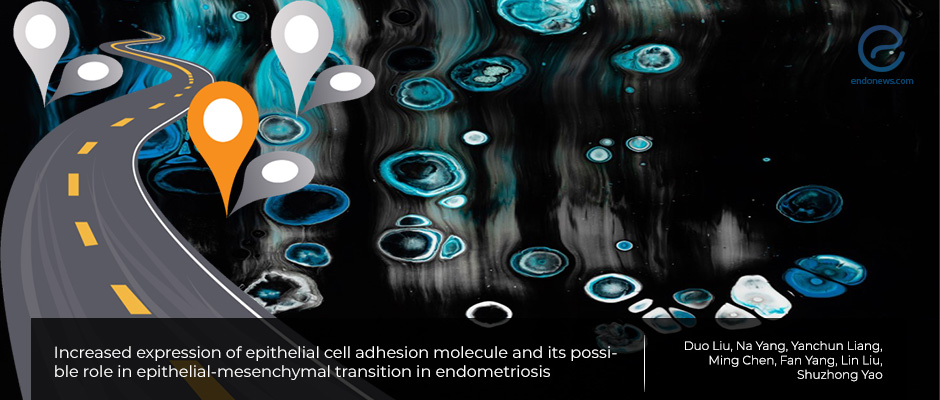Increased expression of epithelial cell adhesion molecule and its possible role in epithelial-mesenchymal transition in endometriosis.
Jul 30, 2020
The interrelationship of EpCAM and EMT in endometriosis
Key Points
Highlight:
- Dr. Yao group suggests that the overexpression of EpCAM might be involved in endometriosis.
Background:
- Endometriosis pathogenesis remains unclear and controversial.
- According to the well-known "implantation theory", migration and invasion are two critical processes for endometriosis development.
- Accumulating evidence demonstrated that endometriosis has mobile and invasive features.
- Epithelial-mesenchymal transition (EMT) is one of the essential molecular mechanisms contributing to metastasis and invasion.
- Epithelial cell adhesion molecule (EpCAM), a well-known EMT marker, functions as a specific adhesion molecule to promote invasion in malignant tumors.
- The relationship between EpCAM and EMT on migration and invasion suggests the possible role of EMT in endometriosis.
Key points:
- A total of 114 patients and 23 controls were analyzed to compare the expression of EpCAM.
- The level of EpCAM, E-cadherin, and N-cadherin was not different between the eutopic endometrium of patients with and without endometriosis.
- The immunoreactivity of endometriosis to EpCAM and N-cadherin, (but not E-cadherin), was significantly higher than that of eutopic endometrium; that is a hallmark of EMT.
- According to this data, EMT participates in the pathogenesis of endometriosis.
Conclusions:
- EpCAM expression is enhanced in epithelial cells of different types of endometriosis lesions, accompanied by the occurrence of EMT.
- This suggests that EpCAM and EMT are both involved in the development of endometriosis.
- The exact role of EpCAM on EMT in endometriosis is still unclear and further studies to clarify these correlations are required.
Lay Summary
Endometriosis is an estrogen-dependent disease that functional endometrial tissue exists outside both the uterine cavity and myometrium. The pathogenesis of endometriosis remains unclear and controversial.
According to the implantation theory, which is the most well-known, migration and invasion are two critical processes for the development of endometriosis. Accumulating evidence demonstrated that endometriosis has mobile and invasive features.
Epithelial-mesenchymal transition (EMT) has been more attractive as one of the essential molecular mechanisms contributing to metastasis and invasion, which are critical for the development of endometriosis. Epithelial cell adhesion molecule (EpCAM) functions as an epithelial-specific adhesion molecule. It is known as an EMT marker and highly overexpressed and promotes invasion in malignant tumors.
Given the relationship and impacts of EpCAM and EMT on migration and invasion, Dr. Yao group hypothesized that EpCAM may play a critical role in endometriosis. Their paper was recently published in the journal of “Obstetrics and Gynaecology Research”.
To study the involvement of EpCAM and EMT in endometriosis, the expression of EpCAM was compared between the 113 patients' endometriosis samples and 23 controls. The level of EpCAM, E-cadherin, and N-cadherin was not different from the eutopic endometrium of patients with and without endometriosis.
The immunoreactivity of endometriotic epithelial cells to EpCAM and N-cadherin, but not E-cadherin, was significantly higher than that of eutopic endometrium. The loss of E-cadherin of the epithelial cells together with the replacement by N-cadherin; a hallmark of EMT; suggested that EMT participates in the pathogenesis of endometriosis.
This data disclose that EpCAM expression is enhanced in epithelial cells of different types of endometriosis, accompanied by the occurrence of EMT, suggesting that EpCAM and EMT are involved in the development of endometriosis. However, the exact role of EpCAM on EMT in endometriosis is still unclear, and more research for this relationship in endometriosis is necessary.
Research Source: https://pubmed.ncbi.nlm.nih.gov/32715572/
E-cadherin endometriosis EpCAM epithelial–mesenchymal transition N-cadherin

